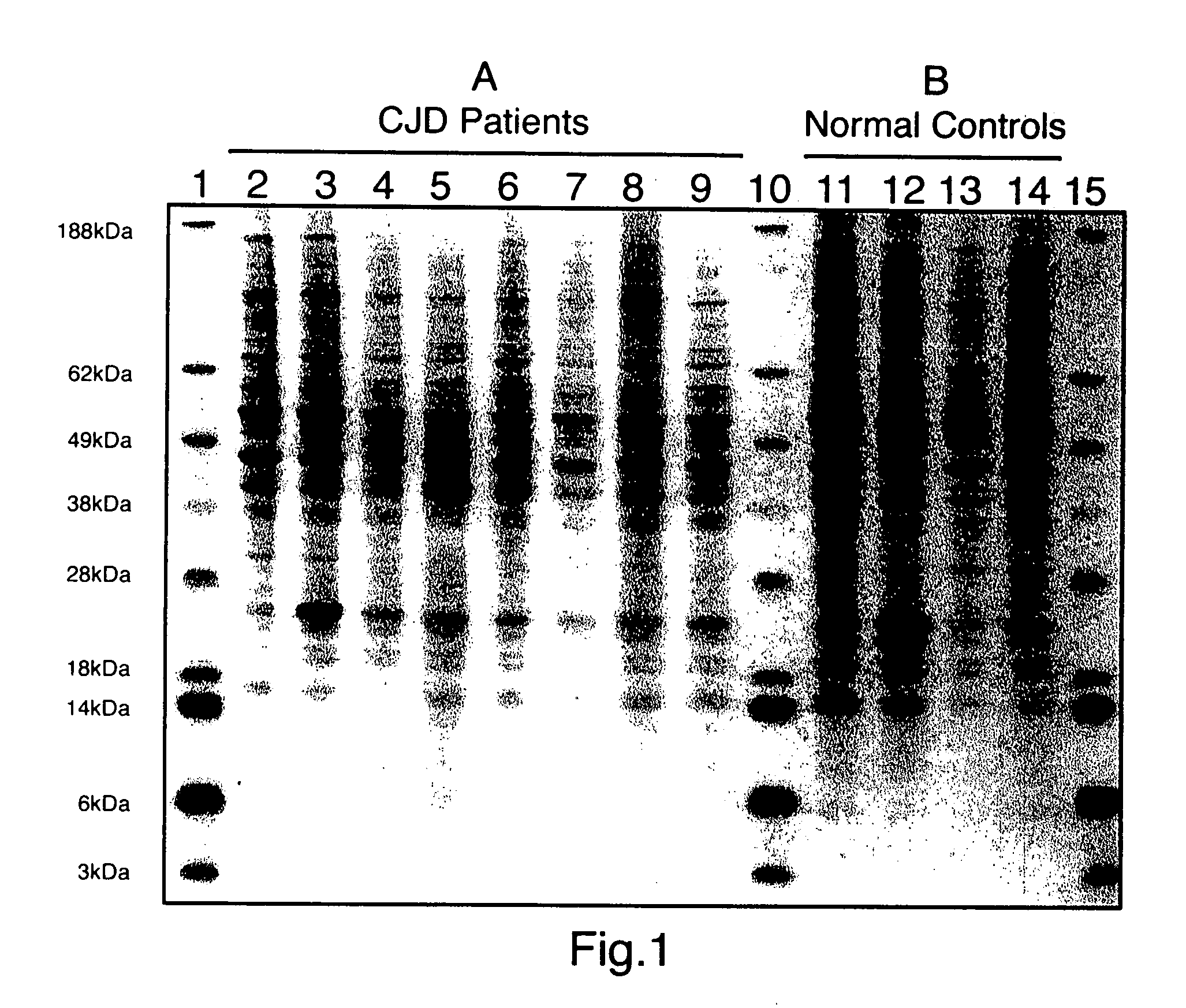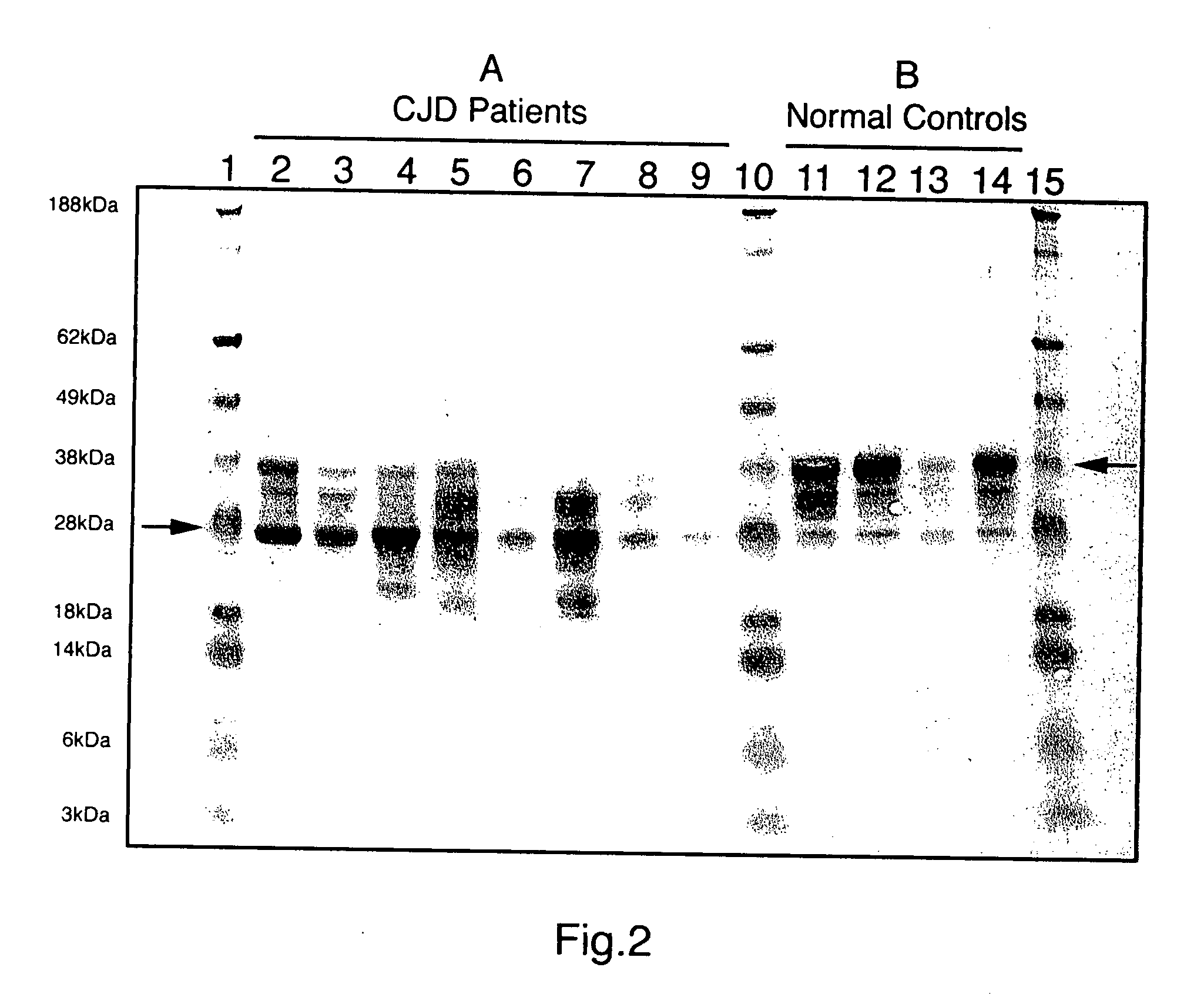Safe method for isolation of prion protein and diagnosis of transmissible spongiform encephalopathies
a prion protein and diagnostic method technology, applied in the field of diagnostic methods of transmissible spongiform encephalopathy, can solve the problems of complex detection methods of prpsup>res /sup>to proteinase-k, difficult screening of animals and human tissues for tse, and inability to meet the current state of the ar
- Summary
- Abstract
- Description
- Claims
- Application Information
AI Technical Summary
Benefits of technology
Problems solved by technology
Method used
Image
Examples
examples
[0020] This method provides significant advantages over currently used methods to extract prion proteins (Madec et al., 1998; Baron & Biacabe, 2001).
1 Provides a Safe Work Environment
[0021] Our guanidine method for extraction of prion protein from CJD brain tissues was developed primarily for laboratory safety reasons. Guanidine salts have been shown to effectively kill the transmissible agent of TSE (Manuelidis, 1997). The methodology of this invention differs markedly from other current methods where the sample is infectious at several stages of the purification procedure (Prusiner, 1984).
2 Provides Easy-To-Do Test Without Need for Special Equipment or Expert Training
[0022] This method is substantially less labor intensive than current methods used to purify prion proteins. Other currently used methods purify the prions by disrupting the tissues with proteases and detergents using repeated ultracentrifugations, using speeds requiring highly specialized expensive equipment av...
PUM
 Login to View More
Login to View More Abstract
Description
Claims
Application Information
 Login to View More
Login to View More - R&D
- Intellectual Property
- Life Sciences
- Materials
- Tech Scout
- Unparalleled Data Quality
- Higher Quality Content
- 60% Fewer Hallucinations
Browse by: Latest US Patents, China's latest patents, Technical Efficacy Thesaurus, Application Domain, Technology Topic, Popular Technical Reports.
© 2025 PatSnap. All rights reserved.Legal|Privacy policy|Modern Slavery Act Transparency Statement|Sitemap|About US| Contact US: help@patsnap.com



